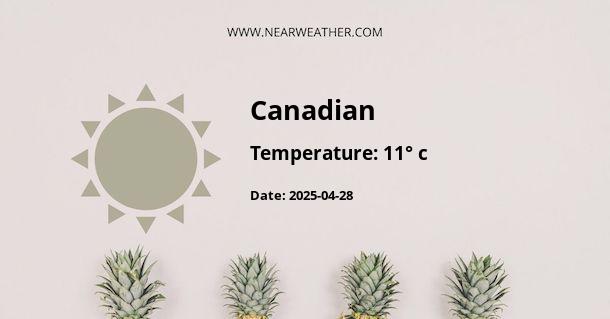Climate and Weather in Canada
Canada is a vast country located in North America, stretching from the Atlantic Ocean in the east to the Pacific Ocean in the west, and bordered by the Arctic Ocean to the north. With its diverse geography and expansive territory, Canada experiences a wide range of climates and weather conditions throughout the year.
Overview of Canadian Climate
Canada's climate is influenced by various factors, including its size, latitude, proximity to bodies of water, and topography. As a result, the country exhibits a range of climatic zones, from arctic and subarctic conditions in the north to temperate and continental climates in the south.
The climate in Canada can be broadly categorized into six main regions: arctic, subarctic, Pacific maritime, Prairie, Atlantic maritime, and continental.
Arctic and Subarctic Climates
The northernmost parts of Canada, including Nunavut, the Northwest Territories, and parts of Yukon, are characterized by arctic and subarctic climates. These regions experience long, extremely cold winters with temperatures often dropping below freezing. Summers are short and cool, with average temperatures ranging from 0°C to 10°C (32°F to 50°F).
These areas also experience the phenomenon of the midnight sun during the summer months, where the sun remains visible for 24 hours a day. In contrast, the winter months bring polar nights, with little to no daylight.
Pacific Maritime Climate
The Pacific Maritime region, which includes British Columbia and parts of Yukon, experiences mild, wet winters and cool summers. The proximity to the Pacific Ocean moderates the temperatures, resulting in relatively mild winters compared to other parts of Canada.
The region receives significant rainfall throughout the year, with the coastal areas experiencing more precipitation than the interior. The mild temperatures and abundant rainfall support lush forests and diverse wildlife in this region.
Prairie Climate
The Prairie region, which includes Alberta, Saskatchewan, and Manitoba, has a continental climate characterized by hot summers and cold winters. The region experiences low humidity and receives less precipitation compared to other parts of Canada.
Summers in the Prairie region can be hot, with temperatures often exceeding 30°C (86°F). However, winter temperatures can drop well below freezing, with occasional cold snaps bringing extreme cold conditions.
Atlantic Maritime Climate
The Atlantic Maritime region, which includes the provinces of Newfoundland and Labrador, Prince Edward Island, Nova Scotia, and New Brunswick, experiences a maritime climate influenced by the Atlantic Ocean. The region has mild, wet winters and cool summers.
Due to its proximity to the ocean, the Atlantic Maritime region receives higher amounts of precipitation compared to other regions in Canada. The coastal areas are particularly prone to fog and strong winds.
Continental Climate
The central and eastern parts of Canada, including Quebec and Ontario, have a continental climate characterized by hot summers and cold winters. The region experiences a wide range of temperatures throughout the year, with significant variations between seasons.
Summers in the continental region can be hot and humid, with temperatures often exceeding 30°C (86°F). Winters are cold, with temperatures dropping below freezing, and snowfall is common.
Weather Variability in Canada
Canada's climate is known for its variability, with significant weather fluctuations occurring throughout the year. The country experiences various weather phenomena, including cold fronts, warm fronts, Arctic air outbreaks, and severe storms.
Winter storms, known as blizzards, are common in many parts of Canada, particularly in the Prairie provinces and the eastern provinces. These storms can bring heavy snowfall, strong winds, and dangerously low temperatures, leading to hazardous travel conditions.
Spring and fall are transitional seasons in Canada, characterized by rapidly changing weather patterns. These seasons can bring unstable weather conditions, with temperature swings and the potential for severe thunderstorms, hail, and tornadoes in some regions.
Summer in Canada is generally mild and pleasant in most regions, with warm temperatures and longer daylight hours. However, heatwaves can occur, particularly in the Prairie provinces and southern Ontario, bringing high temperatures and increased risk of wildfires.
Conclusion
Canada's climate is diverse and influenced by various factors, resulting in a wide range of weather conditions throughout the year. From the arctic regions in the north to the temperate climates in the south, Canadians experience a variety of weather patterns, including extreme cold, heavy snowfall, hot summers, and volatile transitional seasons.
Understanding the climate and weather patterns in Canada is essential for residents and visitors alike, as it helps in planning outdoor activities, preparing for weather-related events, and ensuring personal safety in different climatic conditions.
A - Canadian's Latitude is -37.576061 & Longitude is 143.877426.
A - Weather in Canadian is 11° today.
A - Climate Conditions in Canadian shows overcast clouds today.
A - Humidity in Canadian is 89% today.
A - Wind speed in Canadian is 3.2 km/h, flowing at 157° wind direction. today.
